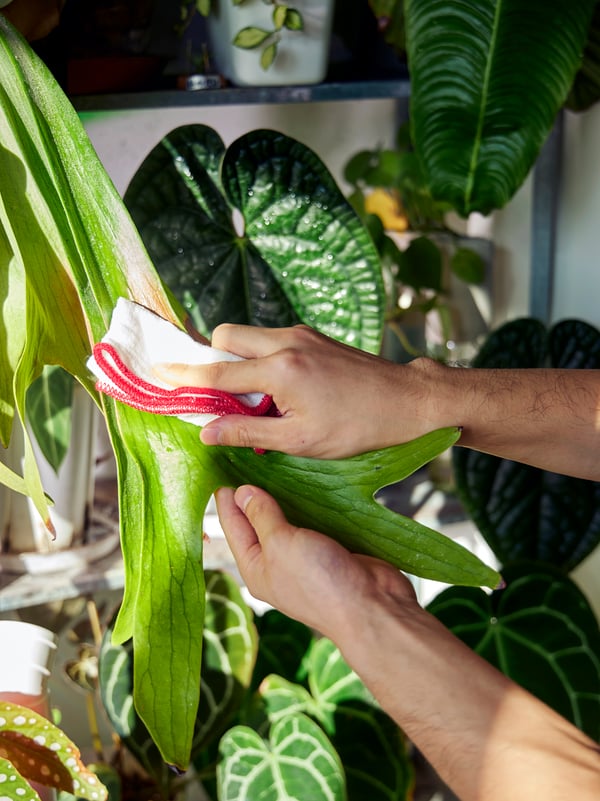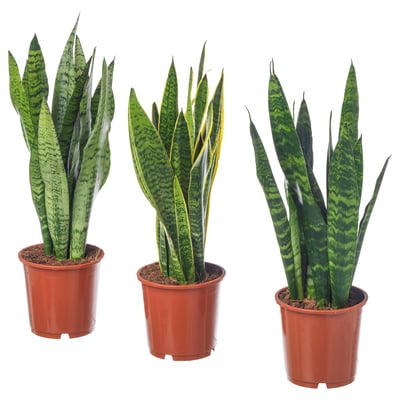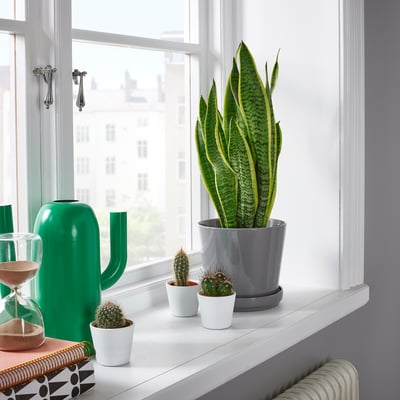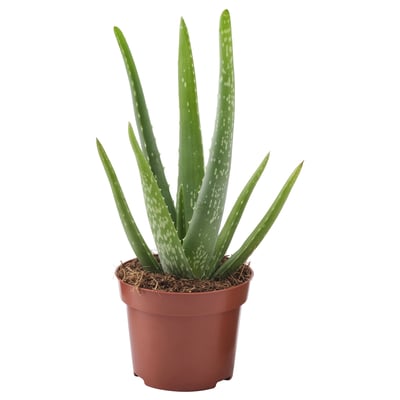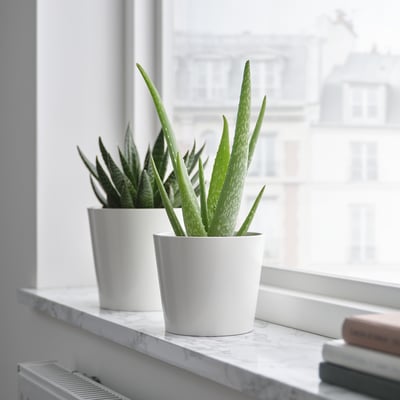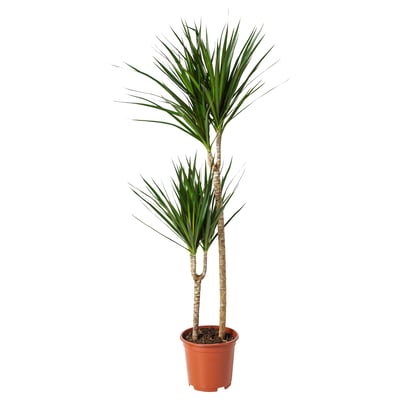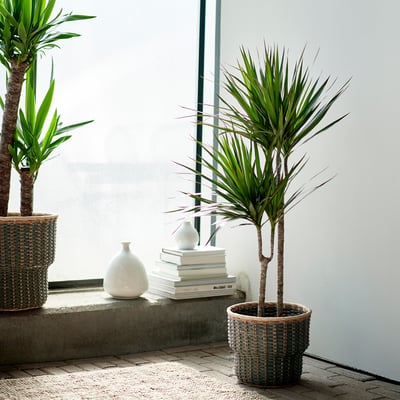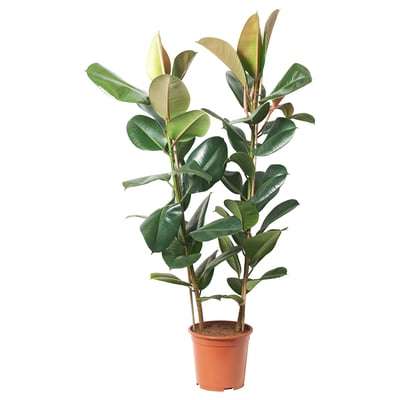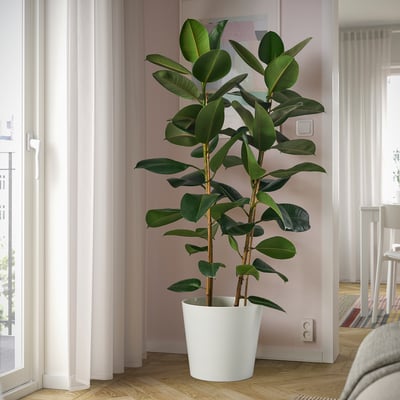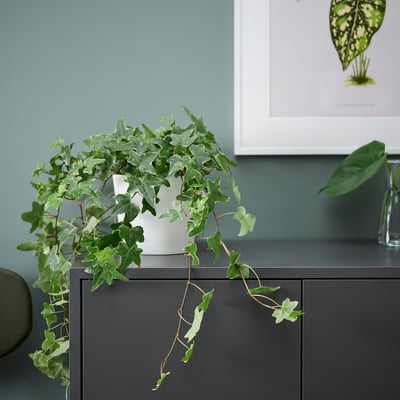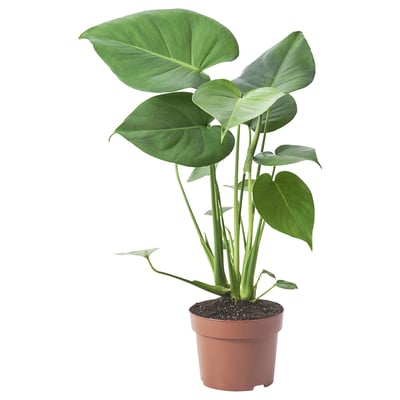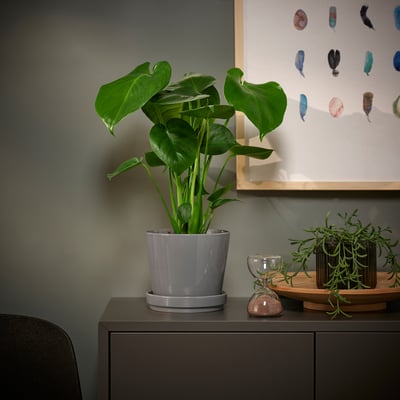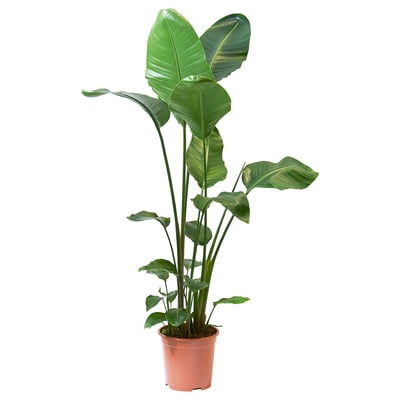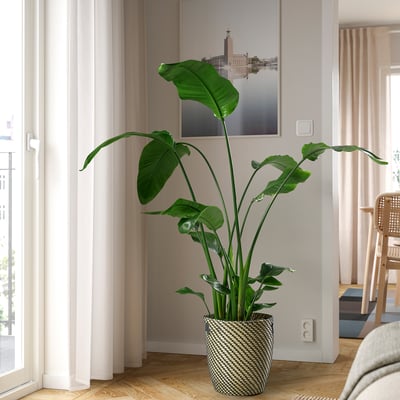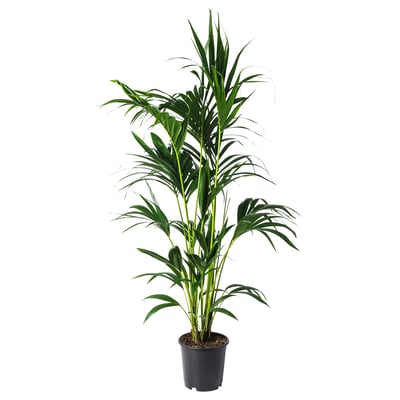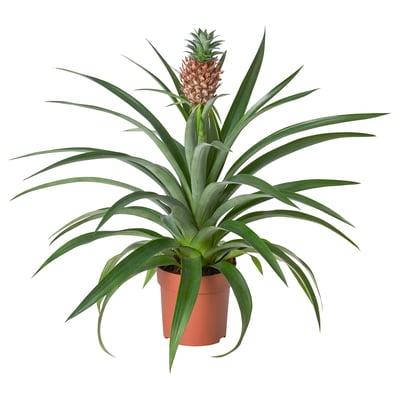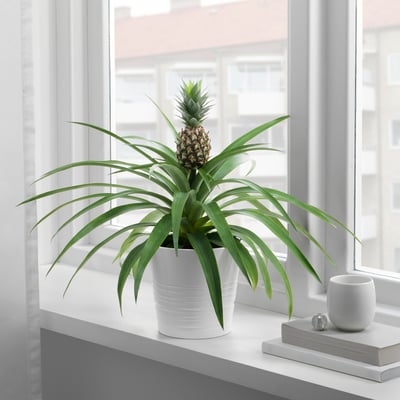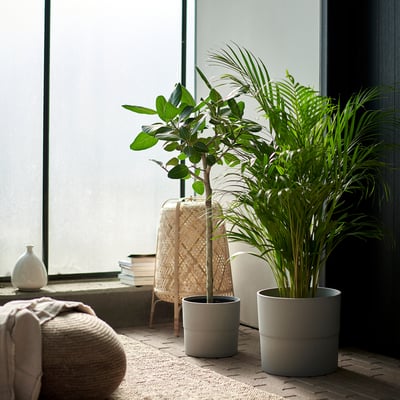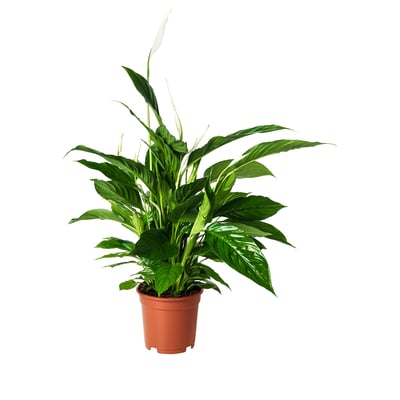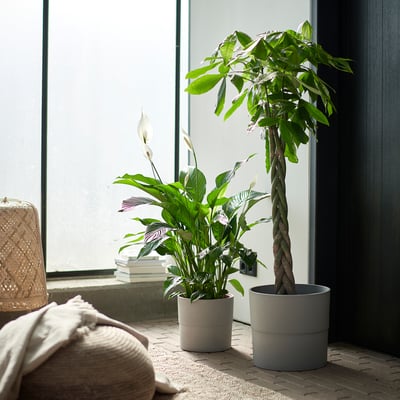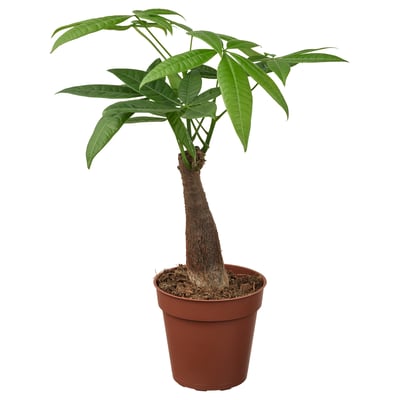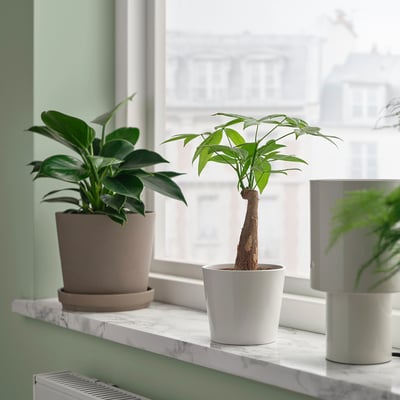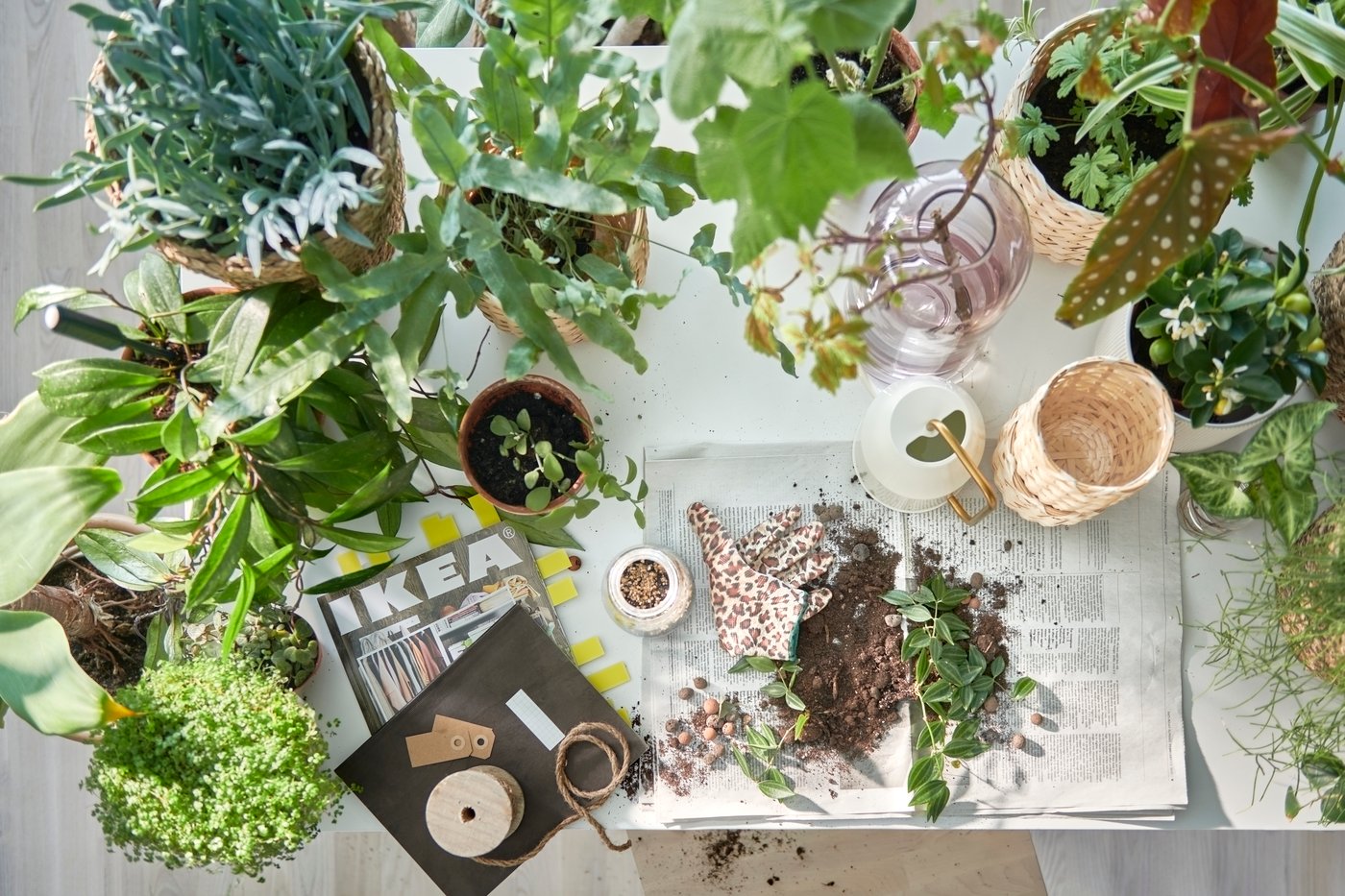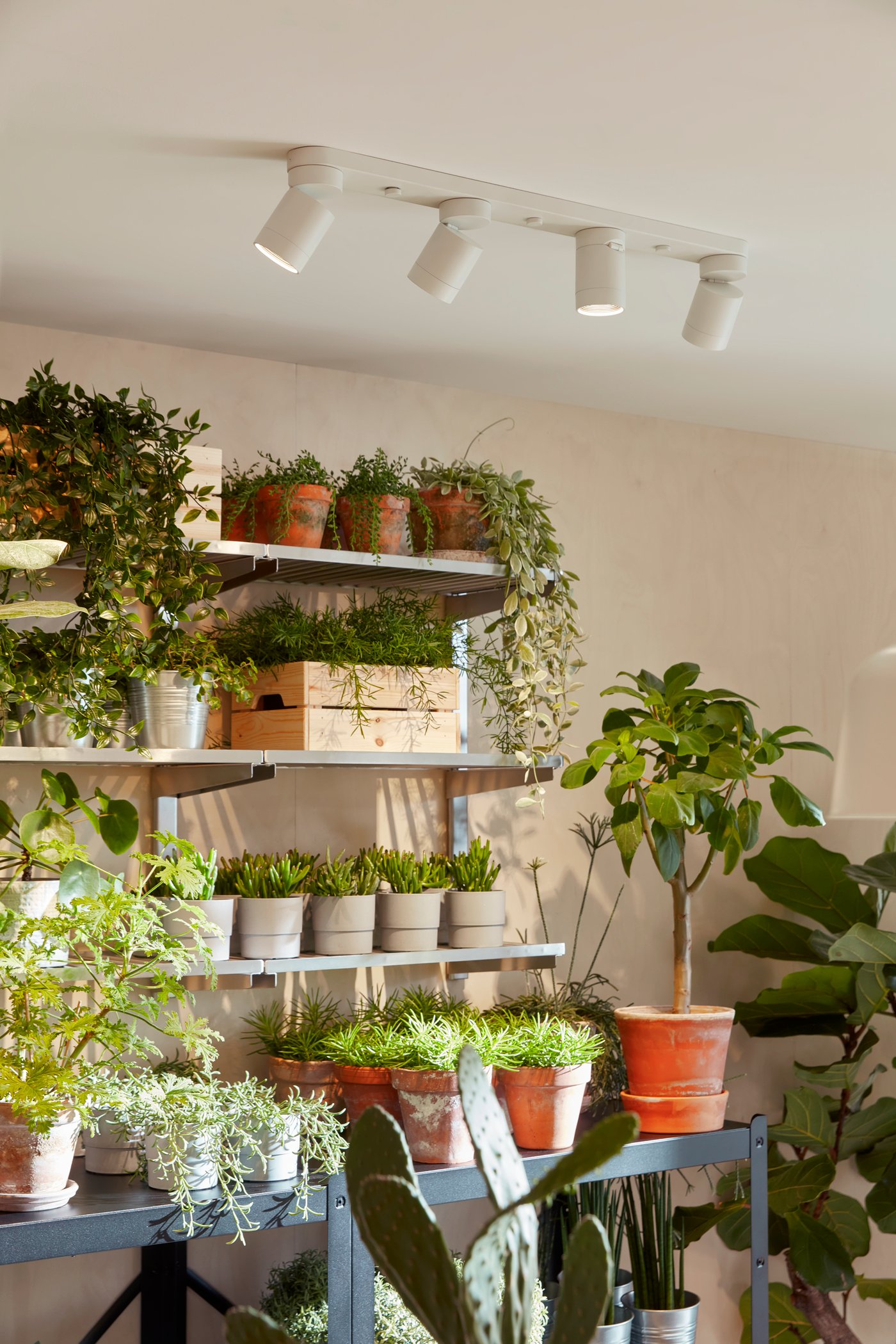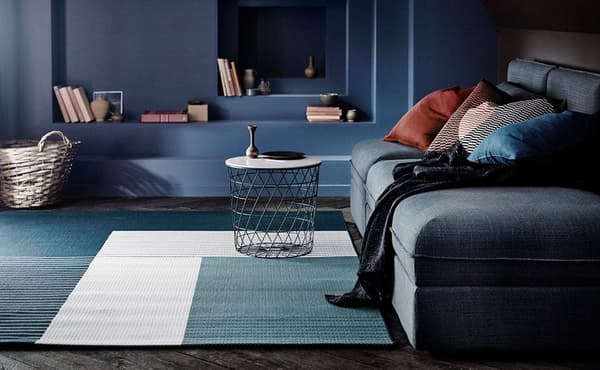How to take care of houseplants
Plants liven up your home and bring lovely colourful touches to your decor. From knowing when to water to how to get the dust off their leaves, here are some easy tips to help you take care of them.

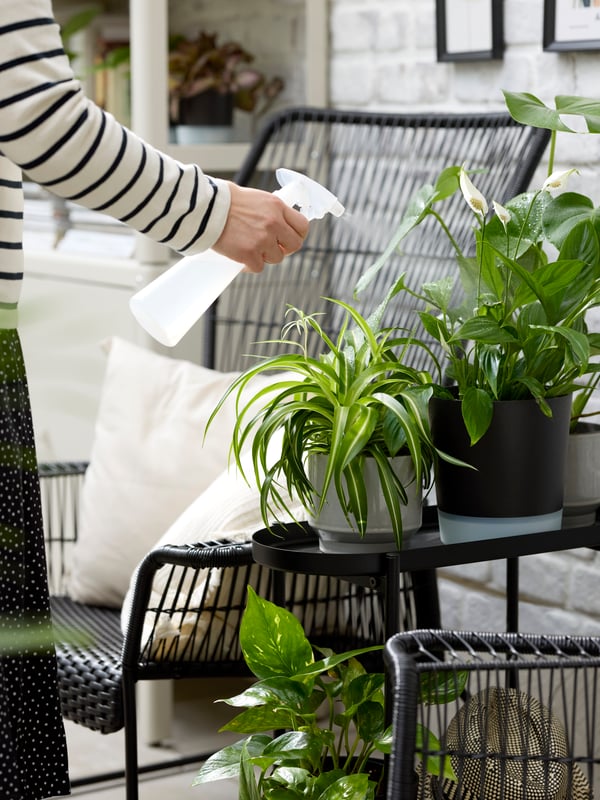
- Product information page
How to take care of green plants?
Plants are very hip. In many households things have gotten out of hand with all that greenery. Some plant might suffer a bit.
Think: dry leaves, moisture deficiencies and, ultimately, empty pots. Let’s do a little plant course.
Advantages of houseplants
Aside from making homes look pleasant, science says indoor plant benefits include boosting your well-being, reducing stress, and helping with creativity. Give love back to your little green friends by following these simple indoor plant care tips.
The right amount of light for your plant
Make sure your plants get the right amount of daylight. If you put a plant in the wrong place, the fun will soon be over. To figure out what plants will work in your indoor space, consider the amount of sunlight the area gets daily. Bright sunlight, indirect light or low light makes a big difference, so checking the care instructions on the plant you’ve bought is wise. Our plant labels show whether a plant needs shade, indirect light, or full sun to help you choose the best indoor plant option for your needs.
For plants that do require full sun, choose a spot in your house where you can place it on top of something, like a high shelf or cabinet.
Plants that need less sun can be placed more in the corners. So keep a close eye on the plant.

- Product information page

- Product information page
Not sure if the plant needs water?
There are often large differences per plant in the amount of water they need. Therefore, check the leaves regularly. How often you need to water the plant depends of course on the plant.
Good news, our plant labels have water drop icons as guides to help you know how much water each plant requires.
- 1 drop = minimal watering is required: once a week or every second or third week, depending on the plant.
- 3 drops = water once or twice week, while being sure not to leave standing water in the collecting dish beneath your planter or pot.
- 6 drops = need more care: watering two to three times a week, with no dryness in the top layer of soil. Self-watering pots with smart inserts can do the job, too.
Remember that plants need more water in summer than in winter.
Start with an easy watering routine
Choose a fixed day during the week on which you water all the plants and check the soil. If necessary, put reminders in your phone so that you do not forget these check-ups.
Not sure if the plant needs water? Try the thumb test: If the soil in the pot sticks to your thumb there is no need to water.
Tip: To make watering more convenient, it can also be a good idea to cluster plants with the same watering schedule. Plus, they make for a beautiful and lush display.
Plants thrive in the right pot
Happy plants, grow. And that’s why they need a new pot every now and then. In general, plants don’t need to be repotted within the first year. You can keep them in the planter they came with and place them in outer pots for a more customized look. Just make sure the roots have enough place to grow.
Tip: use box while repotting, as this process can leave a mess. Go ahead and aerate the soil properly – don’t be afraid to get your hands dirty.
Regardless, a pot with saucer is a plus because it helps to catch and drain excess water.
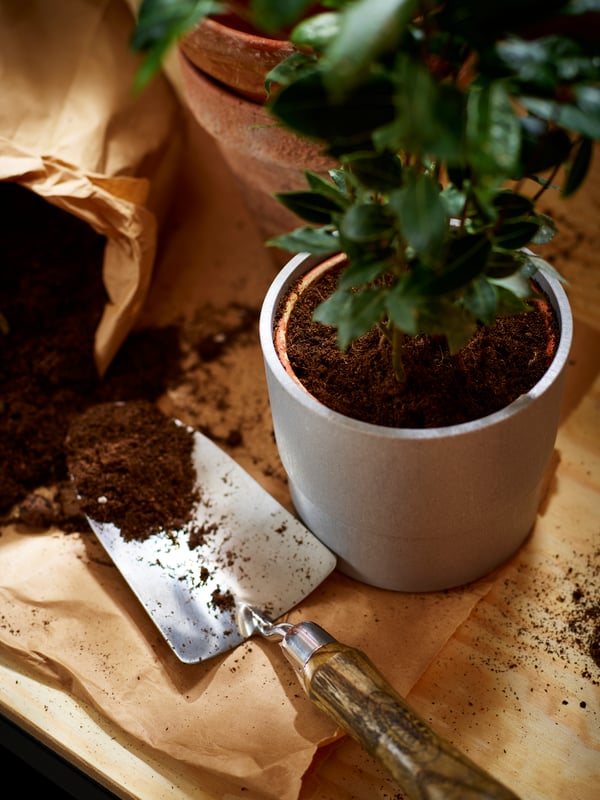
- Product information page
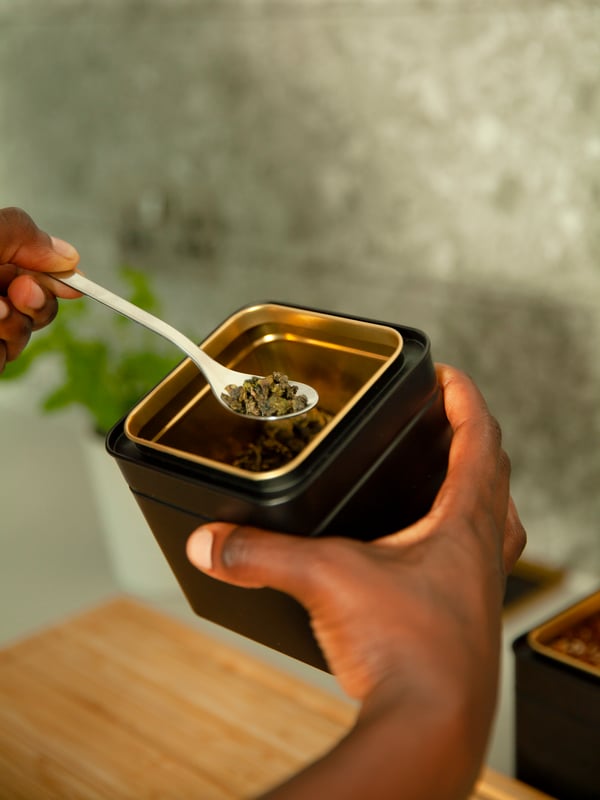
- Product information page
Fertilise to help your plants thrive
Most plants get enough fertiliser in the first months after purchase. After that, its best fertilising is during the peak growing cycle (usually spring-summer), and less in the rest period (usually winter). A reminder: if there's no 'R' in the month's name, give your green friend some extra nutrition.
Make it easy on yourself and go for liquid or soluble Fertiliser. Mix this with water so it doesn't cost any extra time.
Dust off the leaves of your plant
In order to keep your green friends looking and feeling their best, you’ll want to gently wipe off their leaves with a damp cloth, every now and then. Plants that collect dust might not get the sunlight and nutrients they need.
Easy plants
Succulents and cacti hardly need water, but they look great in the house. These plants are a nice change from other greenery. And also ideal for people who keep forgetting that their plants need water. Make no mistake, succulents also need a little bit of moisture regularly. They are also not difficult in terms of light requirements.
There is only one type of plant that is easier to care for: Artificial plants
Picky plants
Plants in this category are still easy to maintain, but has slightly more requirements. Such as a lot of sunlight, a lot of water or minimum temperature. Once again the tip for this group of plants is to follow the advice of the labels on the plant.
Plants for pro’s
This group of plants requires a little more time and love, but is definitely worth it. Keep a close eye on whether these sensitive plants are at the right distance from the heater, are receiving too much or little water and whether they are not in a draft. The need for sun is also important, of course. The thumb and picture check are definitely tricks to use here.
Tip: give yourself less to worry about and use a flower pot with a water reservoir. You can also opt for water droppers.
